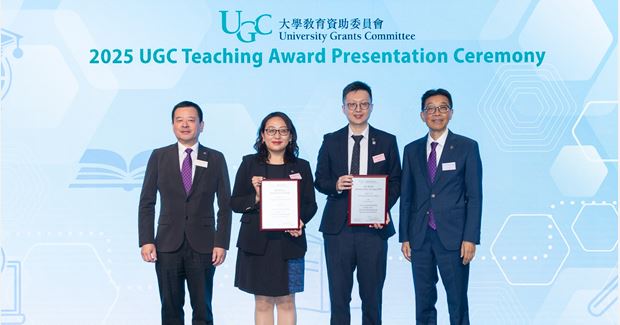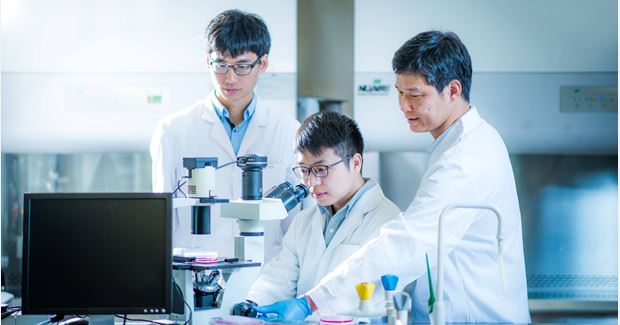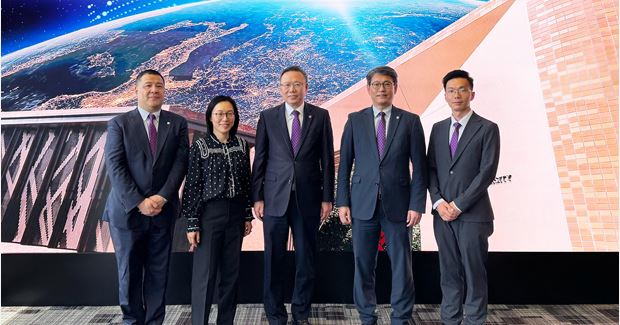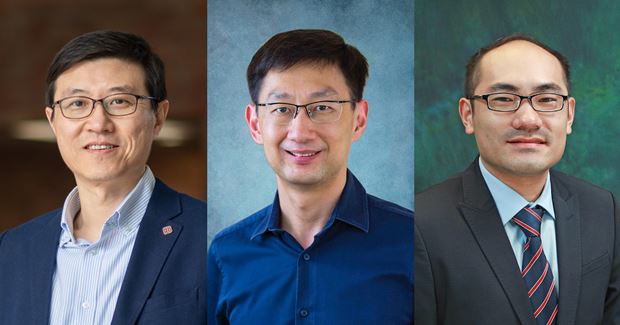PolyU study uncovering Hong Kong’s hidden history with cutting-edge geospatial technologies receives Innovation and Technology Fund grant
4 Jun 2025
Hong Kong’s rich history is interwoven with layers of untold stories, many buried beneath the surface of its bustling modern landscape. A project led by researchers from The Hong Kong Polytechnic University (PolyU)’s Department of Land Surveying and Geo-informatics seeks to reveal and record the City’s lost history hidden underground by utilising cutting-edge geospatial technologies and to launch public education programmes to promote the conservation and better understanding of the City’s cultural heritage. The project has received funding of HK$3.22 million from the General Support Programme under the Innovation and Technology Fund (ITF-GSP) of the Innovation and Technology Commission.
The two-year project “Antiquity and Heritage Lost, Found and Revealed: Promotion of 21st Century Geo-spatial Technologies,” led by Prof. Wallace Wai Lok LAI, Associate Head (Teaching) and Professor of the Department of Land Surveying and Geo-informatics, aims to identify and capture images of hidden and buried wartime relics, cultural antiquities, and heritage sites in Hong Kong by utilising advanced geospatial technologies. These technologies include geo-referencing and mapping techniques, airborne and terrestrial laser scanning, and geophysical technologies, enhancing the understanding of Hong Kong’s battlefields and cultural heritage sites. The research is being conducted in collaboration with Prof. Chi-Man KWONG, Associate Professor of the Department of History of Hong Kong Baptist University, and local amateur war historians.
PolyU research team has collaborated with the Government, universities and industry partners, while also working closely with National Geographic Magazine, Scientific American, as well as the Pokfulam Farm, a collaboration between NGO and community in Pokfulam village, to promote public engagement and the use of advanced geospatial technologies in uncovering Hong Kong’s hidden stories. Utilising geospatial and geophysical technologies to reconstruct and revive Hong Kong’s history, the team has recently uncovered “lost and found” stories from five cultural and wartime heritage sites. These include the Gin Drinkers Line; Mount Davis Battery, the East Brigade Headquarters in Tai Tam; Pokulam Village and the Old Dairy Farm; Fan Lau Fort on Lantau Island, and Tung Chung Fort.
To promote technology-driven historical interpretation, geo-spatial mapping and conservation, and STEAM education, the PolyU team will provide a range of education programmes including field visits to cultural and wartime heritage sites in Hong Kong, STEAM-focused seminars and talks, interactive workshops, and immersive learning exhibitions. The project has been supported by advanced facilities at the PolyU Industrial Centre, including its Hybrid Immersive Virtual Environment (HiVE) and 3D printing facilities, to enable an immersive learning experience for secondary and tertiary students on combining art-tech with history to depict Hong Kong’s hidden stories. This initiative is expected to leverage 21st Century geospatial technologies to enrich STEAM education, deepen public appreciation for cultural heritage, foster widespread community participation, and promote effective knowledge sharing.
Prof. Wallace Lai said, “The project combines cutting-edge technology with historical investigation, uncovering and preserving cultural legacies. More than just an educational platform, it also serves as a vital reminder to safeguard our collective memories in humanities. Through advanced technologies, interactive education, and innovative approaches that blend art, technology, and historical interpretation, we aim to ignite a passion for learning in the next generation. Our mission is to preserve and revitalise Hong Kong’s rich history, ensuring it remains a vibrant and enduring presence in their hearts and minds.”
With support from the PolyU Research Institute for Land and Space, Prof. Lai is expanding this study to Southeast Asia, building on Hong Kong’s experience in applying geo-spatial technologies. In May of this year, the team embarked on its first expedition to Malacca, where they conducted 3D-scanning and mapping of the iconic fortification gate and St. Paul Church, both dating back to the Portuguese and Dutch colonial periods. Using digitised old maps alongside advanced scanning and mapping techniques, they also uncovered traces of lost and buried colonial fortification walls. Further expeditions are planned for other regions in Malaysia
To raise public awareness and deepen understanding of the importance of innovation and technology, the ITF-GSP aims to support non-research and development projects that contribute to the upgrading and development of Hong Kong’s industries, the fostering of an innovation and technology culture in Hong Kong, as well as promoting popular science.
***END***
Press Contacts
Ms Iris Lai
Manager, Research and Innovation Office
- 3400 2492
- syiris.lai@polyu.edu.hk
Press Contacts
Ms Jess Fung
Manager, Public Affairs
- 2766 5197
- sf-jess.fung@polyu.edu.hk
You may also like





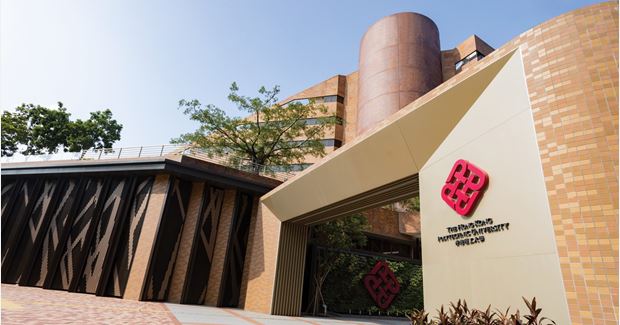

.jpg?bc=f1f1f1&h=325&w=620&rev=bfb0ac026b02444cbac2f39c58501697&hash=050ADBBBDDBBA935886BC2C118F61B47)
